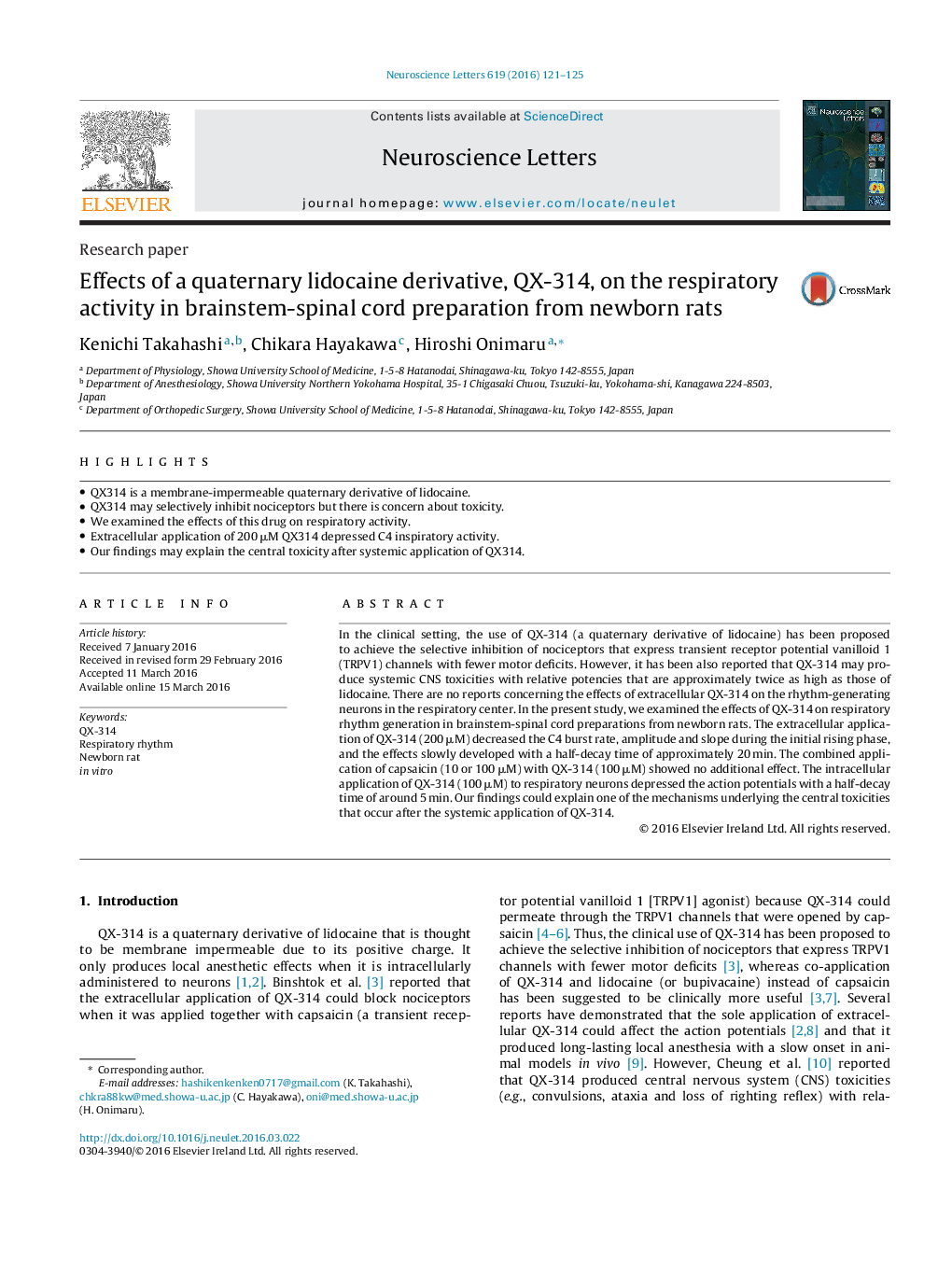| Article ID | Journal | Published Year | Pages | File Type |
|---|---|---|---|---|
| 6279735 | Neuroscience Letters | 2016 | 5 Pages |
Abstract
In the clinical setting, the use of QX-314 (a quaternary derivative of lidocaine) has been proposed to achieve the selective inhibition of nociceptors that express transient receptor potential vanilloid 1 (TRPV1) channels with fewer motor deficits. However, it has been also reported that QX-314 may produce systemic CNS toxicities with relative potencies that are approximately twice as high as those of lidocaine. There are no reports concerning the effects of extracellular QX-314 on the rhythm-generating neurons in the respiratory center. In the present study, we examined the effects of QX-314 on respiratory rhythm generation in brainstem-spinal cord preparations from newborn rats. The extracellular application of QX-314 (200 μM) decreased the C4 burst rate, amplitude and slope during the initial rising phase, and the effects slowly developed with a half-decay time of approximately 20 min. The combined application of capsaicin (10 or 100 μM) with QX-314 (100 μM) showed no additional effect. The intracellular application of QX-314 (100 μM) to respiratory neurons depressed the action potentials with a half-decay time of around 5 min. Our findings could explain one of the mechanisms underlying the central toxicities that occur after the systemic application of QX-314.
Related Topics
Life Sciences
Neuroscience
Neuroscience (General)
Authors
Kenichi Takahashi, Chikara Hayakawa, Hiroshi Onimaru,
